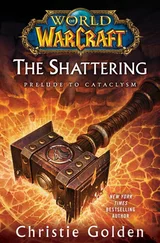Much of the Maine coast and the whole coastline of the Bay of Fundy had been desolated in 1990 when the Joseph Kinross loaded with crude for the refinery at Pocolagon, had collided with the chemical carrier Jenny Wren, outward bound from Eastport with a cargo of tritorridine. They had run into each other at the entrance to the Bay of Fundy in a typical radar-assisted collision; the category of maritime disasters which included those in which watch-officers had preferred to watch a radar screen in a warm wheelhouse than look over a dodger on a cold bridge. A collision of two aging monsters manned by incompetents and officered by fools. In 1990, despite high pay and luxurious accommodation, it had already become difficult to persuade sensible seamen to ship out in single-bottomed, single-boilered, single-screwed behemoths, rescued from the scrap yard by anonymous owners and chartered through Caribbean-based agents.
The Jenny Wren had been the prototype for a class of chemical carriers, a class which in a few years acquired a reputation which made them almost uninsurable. She had been cut in two and her bows had gone straight to the bottom. Her stem had lingered long enough for the whole crew to get away in the boats; the sea had been as calm as Fundy ever gets and the visibility good.
The Joseph Kinross, listing to port, had continued to sail northeast, trailing crude from her ripped tanks. She had been abandoned as quickly as the Jenny Wren. The only engineer on watch at the time of the collision had been her dedicated engine-room computer. (Since the late nineteen-sixties human engineers on supertankers had kept office hours.) It had manfully tried to maintain the last-ordered speed despite the list and the gashed hull. When the engine room flooded, the computer had drowned. The more rugged fuel-pumps had continued to fuel the furnaces, even after the boiler feed-pumps had burned out their bearings. So the boiler had blown up, tearing a section out of her bottom.
That had stopped her engines but the momentum of one of the largest man-made masses ever to put to sea had carried her on for another fifteen kilometers. Then the spring tides, roaring up the Bay of Fundy, had taken over and swept her level with Saint John where she had hung for half an hour before sinking.
The Joseph Kinross had been over a kilometer from stem to stem and rated at a million metric tons. By the time she sank she had discharged half a billion liters of crude onto the Bay of Fundy, with the result that the waters of the Bay had been less troubled during the subsequent spring gales than ever before in history. During the next few months, as her remaining half billion liters came welling up, the Fundy tides and the Fundy winds had laid a black strip of crude oil between high and low watermarks from Portland to Brier Island.
This was a disaster that marine experts had been predicting for years. The Governments of Canada and the United States reacted as though it were an unexpected Act of God. The disappearance of the anonymous owners and the bankruptcy of the charter parties left a financial hiatus which delayed action, and by the time action was taken there was no effective action to take. Both governments finally announced that, given time, the coast would recover its unsoiled condition. Then the seepage from the Jenny Wren began to take effect.
TTD, tritorridine, is an innocuous compound used in the synthesis of neoplasties. Under sufficient pressure, however, it reacts with free chloride ions to produce ritidine chloride, toxic to most organisms. At a depth of three hundred meters the ocean provided both chloride ions and pressure. As TTD seeped out, ritidine was formed, currents and tides distributed it and killed off what marine life had survived the oil. Within a year the Bay of Fundy was a dead sea, and over its whole coast hung the stench of death.
By then the entire population of the littoral had been evacuated. Both the US and the Canadian Governments compensated its dispossessed citizens by buying them out. The Canadians, with rare bureaucratic humor, declared the devastated strip of coast to be a wildlife sanctuary. The US Government, more realistic (or with a more subtle wit) gave theirs to the military. The oil-soaked, death-strewn beaches provided a training area which (apart from the cold) simulated conditions troops were likely to meet going ashore when the Persian Gulf again went critical.
Once the need for amphibious training was past, the deserted coast had become a proving-ground for bombs, shells, and guided missiles, with Jona’s Point as a prime target. The peninsula and its hinterland had been bombarded by high-explosive, antipersonnel spreaders, napalmite, smokes, defoliants, and God knows what else. The fuse-failure rate was low, but even at one percent the number of unexploded missiles with various contents scattered through woods, beaches, and inshore shallows accumulated until the Point was among the most heavily mined areas in the world. The ideal site for both the new Federal Penitentiary and the prototype fusion reactor.
By then TTD has ceased to seep from the Jenny Wren, the sea had given up its dead, and the lower forms of marine life had started to thrive on the rich organic remains of the original inhabitants. The cod, the pollack, the herring, the hake, and the halibut followed to gorge once more on the biota the Fundy tides swept over the ledges, and lobsters crawled slowly back up the coast to their cold feeding grounds. The only major species made extinct by the combination of oil and TTD was the Fundy Inshore Fisherman.
Inshore fishing is a hard way to earn a living. It requires a mastery of many skills, including an intimate knowledge of where, when, and how. By the time the fish returned the fishermen who knew had gone and nobody was interested in relearning. During the Affluence only the rich went to sea in small boats and bad weather, only die rich enjoyed cold, wet, and exhaustion as they raced sailboats, each of which cost more than the whole fleet which had once fished from Sutton Cove.
The Believers had moved in to fill the ecological niche left vacant by the extinction of the local fishermen. The original founders had been devout, enthusiastic, and educated but all they had known about commercial fishing was what young Enoch and two old fishermen had been able to tell them, and what they had read in books. Their first catches had been pitifully small, but as they learned about the sea and developed their own fishing techniques, the Settlement had grown and prospered.
The Believers were simpleminded in their religion but not in their thinking. The technological constraints of their creed had made them apply “elegant engineering” to small-boat fishing. Offshore the great factory ships steamed over the Grand Banks, their fish-pumps sucking up everything that swam, converting live fish to canned, frozen or powdered forms, untouched by human hands. But they could not invade the rocky inshore grounds where the underwater ledges would smash their pump intakes and rip their hulls. Yet it was along those ledges that the rich feeding grounds lay; waters that could only be harvested by hand-line and trawl.
The original Believers had been a mixed lot and, like my companions in the Pen, had had a variety of skills. After twenty years of learning the waters the fleet out of Sutton Cove was bringing in catches as large as those of the sixteenth century when fishermen from Britain, France, and Portugal first discovered the richest fishing grounds in the world.
At the time of the Settlement’s founding the locals had looked upon Believers as I had done at first; a group of religious nuts trying to live a simple life of semiproverty while the rest of America was riding the Affluence. That patronizing but friendly attitude had started to fade as the Settlement had advanced from rural poverty to quiet prosperity. Now many of the locals were starting to talk of the Believers as a bunch of foreigners who had moved in to steal their lobsters, although there was not a local left who knew how to bait a trap.
Читать дальше







![Айзек Азимов - Прелюдия к Основанию [= Прелюдия к Академии // Prelude to Foundation]](/books/435122/ajzek-azimov-prelyudiya-k-osnovaniyu-prelyudiya-k-ak-thumb.webp)




